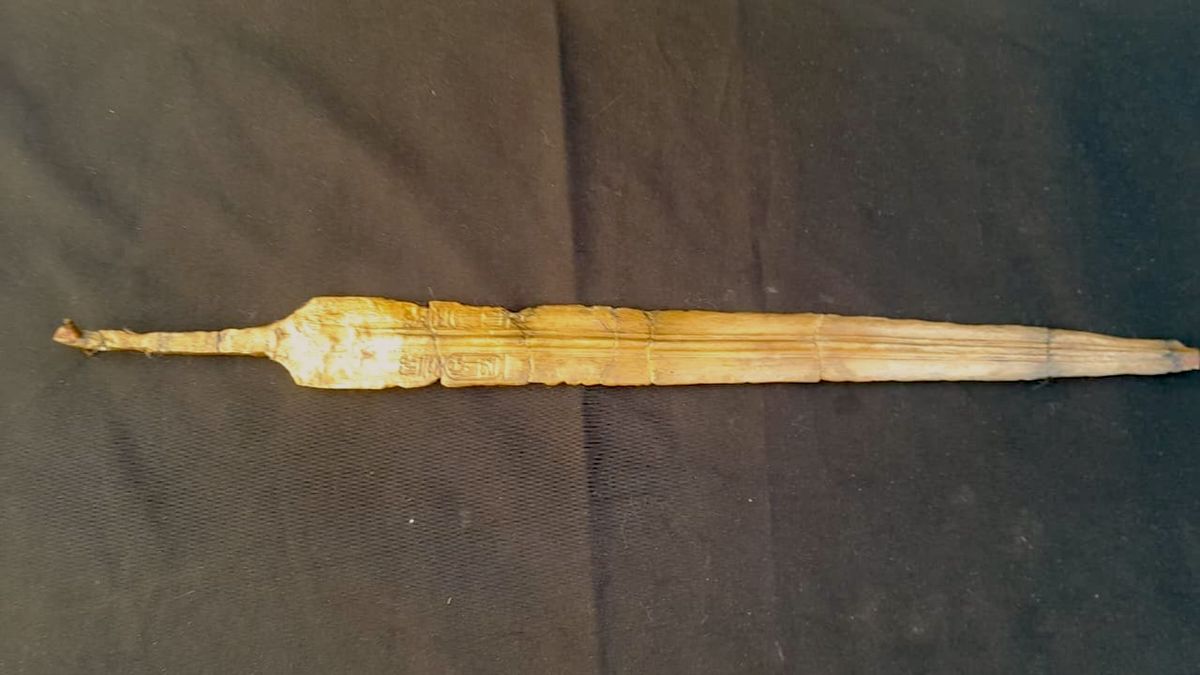Archaeologists in Egypt uncovered the remains of an ancient military barracks believed to date back 3,200 years placing it during the reign of Ramesses II (circa 1279 to 1213 B.C.). The barracks were found in Tell Al-Abqain located in the Beheira Governorate of the northwest Nile Delta.

Also Read: Easter Island Population Didn’t Collapse, New DNA Evidence Reveals Connections with Native Americans
Tell Al-Abqain, where the Egypt sword was found, was a military fort that played a main role in protecting Egypt’s northwestern borders. The fort was situated to defend against invasions by Libyan tribes and the Sea Peoples, a confederation of naval raiders who threatened the Egyptian empire during the Late Bronze Age.
The fort’s location in the Beheira Governorate placed it around 90 kilometers south of Alexandria.
The period during which these barracks were active coincides with a time when Egypt faced increasing pressure from the Libyans, who were becoming a growing threat.
Textual accounts from ancient Egypt, as well as this archaeological discovery provide strong evidence that the Egyptians built these barracks to secure their borders against the Libyans.
Ramesses II, known for his military campaigns and defensive strategies likely constructed or utilized this site to reinforce his military presence in the region.
The barracks consist of a series of storerooms, ovens for baking and other functional spaces. The storerooms were likely used to store grain, a resource for sustaining soldiers stationed at the outpost.
Archaeologists also unearthed pottery containing animal bones including those of fish and cows. The cow bones found in storage silos near an oven suggest the animals were butchered, dried and preserved for later consumption.
Cows held symbolic importance in ancient Egyptian culture often representing strength, abundance and celestial power. It is likely that the animals were primarily a food source for the troops.
The excavations revealed personal artifacts providing insights into the daily life and routines of the soldiers stationed at the barracks. Items such as hunting tools, jewelry, hygiene products like ivory kohl applicators and amulets were discovered.
Scarabs and protective amulets were used for religious or protective purposes indicating that the soldiers were not only focused on military tasks but also engaged in spiritual practices for protection and good fortune.
Several cow burials were uncovered at the site. The Egyptian Ministry of Tourism and Antiquities mentioned that cows often symbolized deities and prosperity in Egyptian culture, but Ahmed El Kharadly, the lead archaeologist on the project believes these burials were more practical.
Also Read: Prince Hisahito Becomes First Royal Male in Japan to Reach Adulthood in 39 Years
According to El Kharadly, the cow bones found in the storage silos indicate that the animals were processed for food and the dried meat was stored for consumption by the soldiers stationed at the barracks.
Two limestone blocks with hieroglyphic inscriptions were also discovered at the site. One of the blocks mentions Ramesses II, while the other references an official named Bay. These inscriptions combined with the sword, underline the importance of the barracks in the military structure during Ramesses II’s rule and the measures employed by the Egyptians to secure their empire.
Weapons and hunting tools were discovered. Personal accessories including ivory kohl applicators and necklaces made from semi-precious stones like carnelian and faience beads were also found.
A half-bronze ring and scarab beetles referencing Egyptian gods were among the other items uncovered, revealing the soldiers’ religious practices and beliefs.
The buildings in Tell Al-Abqain were constructed using mud bricks arranged in two identical blocks separated by a narrow passageway. Some rooms in the fort were specifically used to store food and fragments of large pottery and animal bones were found.
Two limestone blocks were also found at the excavation site, one of which was engraved with hieroglyphic inscriptions of Ramses II.
In 2017, archaeologists found a temple dedicated to Ramses II in the Badrashin area of Giza. Additionally, in 2023, 2,000 rams’ heads were uncovered at the Temple of Ramses II, attesting to the pharaoh’s lasting influence and the reverence in which he was held by later generations.
Also Read: A Boy Accidentally Smashes a 3500-Year-Old Jar at Hecht Museum




